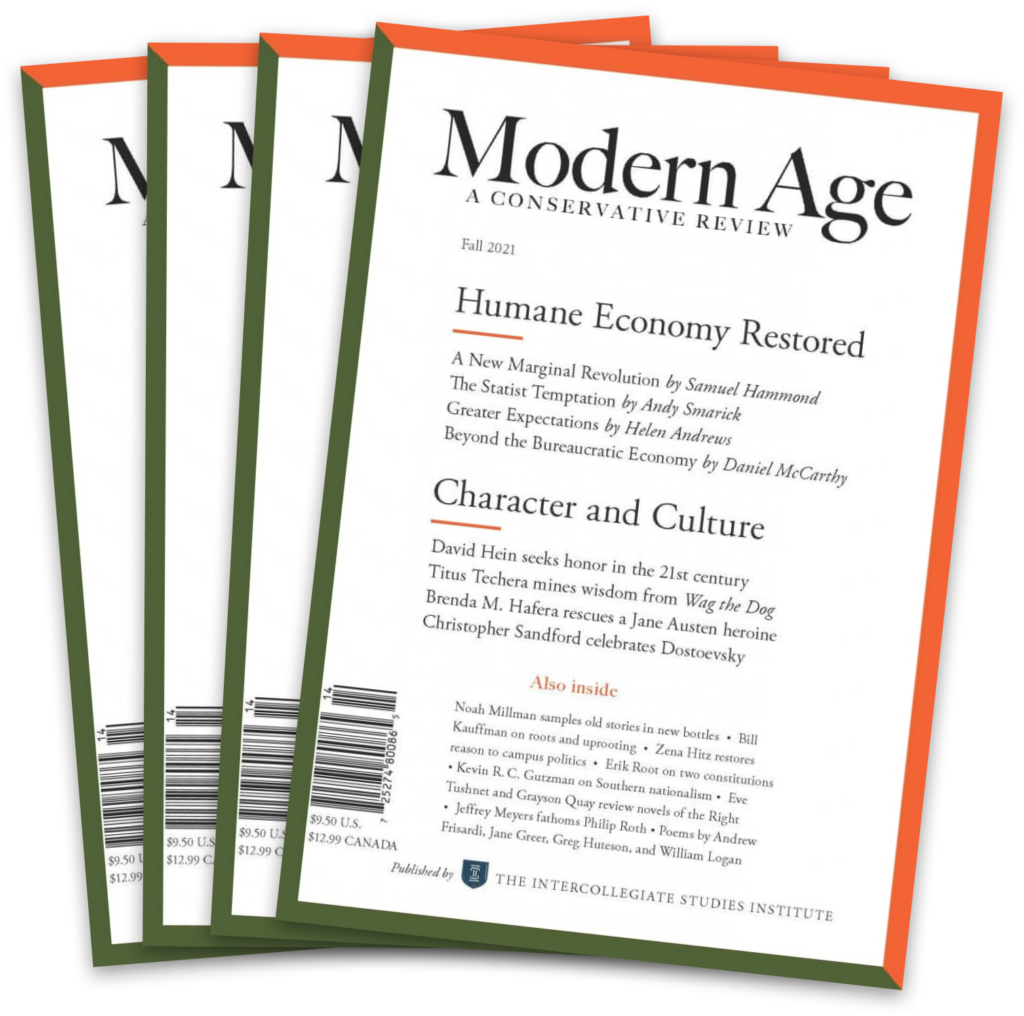Some observers may find it odd or even amusing that one of the central issues of contention within the conservative movement is a war fought well over a century ago. Yet one’s views on this war—and whether one prefers to call it “The Civil War,” “The War between the States,” or “The War of Northern Aggression”—says much about one’s vision of America’s central traditions and their worthiness for conservation.
Was this a war to end slavery and preserve the unitary, national government established by the Declaration of Independence and solidified under the Constitution? Or was it a war between those convinced that states remained essentially sovereign controllers of their own destiny under the Constitution and those convinced that the union was indissoluble? Or was it an attempt by the southern states to exercise their constitutional right to secede, to which the northern states responded with force so that they might continue to use the machinery of the federal government to enrich themselves at the South’s expense?
The facts of the Civil War make any of these readings seem at least minimally plausible. Certainly there was a great deal of rhetoric on the Union side to the effect that the South had become uncivilized through its practice of slavery. Certainly much of this rhetoric was hypocritical, given hostile northern attitudes and laws regarding black people. Certainly the practice of chattel slavery in the South was brutal and a violation of the natural law in that it denied many blacks the essential ingredients of a decent life—not only basic personal freedom, but family integrity and the right to worship as they pleased, among other things. And certainly there were substantial differences among Americans—and not just between southerners and northerners—regarding the right of secession. Some northern states had threatened to leave the union during the War of 1812, drafting declarations during their Hartford Convention that defended state sovereignty. Southern states, under the leadership of Thomas Jefferson and James Madison, had asserted their right to “annul” federal legislation harmful to their fundamental interests. Representatives of all the states came together in record time to rebuke the Supreme Court and its decision in Chisholm v. Georgia (1793), which declared that only one American government could be sovereign, and that that was the federal government. Yet many contended that secession was illegal, disallowed by the Constitution, certainly without the consent of all the other states. Abraham Lincoln argued that the nation was formed by the Declaration of Independence: that Americans were one people ruled by one set of ideas and a common commitment to human freedom. And for decades Supreme Courts, presidents, and Congresses committed to internal improvements and open markets had been building roads, raising common tariffs and attacking state-based barriers to commerce.
The so-called American system of tariffs and internal improvements had accentuated growing differences between southern, western, and northeastern political, economic, and social life. Northeastern businesses profited most from the tariffs, which made goods from their European competitors more expensive, and northeasterners profited more from internal improvements (roads, harbors, and the like) than people in other sections of the country. Moreover, Americans in the various sections were growing more and more apart in their cultures. Western frontiersmen sought cheap land and increased migration from the northeast—which would increase the cost of eastern labor; they sought to ban all black migration as a danger to free labor. And the south’s economy had gone from a varied one resting only partly on a system of slavery its own people often condemned to an increasingly prosperous dependence on cotton and a slave system many began defending as in accordance with nature and God’s will.
Thus, the extent of independent state power, states’ economic interests, and even the cultural grounding of each section of the United States were, by the mid-nineteenth century, increasingly in conflict. The election of Abraham Lincoln to the presidency may be seen, then, as merely the match that lit the powder keg. Earlier, Lincoln had occasionally spoken somewhat radically on the topic of slavery. But for the most part he had taken a predictable western position against slavery as a moral (and economic) wrong that should not be extended to the territories. Further, he came into office arguing for mutual restraint and promising to do nothing to harm the South or its slave interests. But southerners, having lost a hotly contested election to a man and a party representing a union of western and northeastern interests, were understandably angry and worried. That cool heads did not prevail was the source of great tragedy, but it was hardly surprising.
The point of greatest contention within the conservative movement revolves around the issue of state sovereignty and the connection (or lack thereof) between localism and slavery and the racism intertwined with slavery in the United States. Some on the Right have had a tendency to romanticize the southern cause and to overlook the real moral enormities of chattel slavery. In this view there was a War of Northern Aggression, by which the North sought to destroy the pre-capitalist, conservative, and agrarian southern way of life. While conservatives respect tradition and historical inheritance, idealizing a lost subculture and using this idealized vision as a means of condemning the mainstream of the American tradition verges on utopianism. To other conservatives, it compromises the coherence of our current tradition and denies our society potentially important defenders. Yet these southern partisans defend central principals of conservatism and of the American tradition: local autonomy and respect for tradition.
Others within the conservative movement reject southern traditions and localism altogether on the grounds that they at one time led to the toleration of slavery. Such thinkers prefer to base their vision of America and its traditions on a reading of the Declaration of Independence that sees America as a single, unitary state dedicated to the protection of individual rights. In this view, the North was morally obligated to invade the South in order to stamp out its evil, slave-based society. To condemn chattel slavery as practiced in much of the South prior to the Civil War is undoubtedly to claim the moral high ground. But other conservatives are highly critical of the basis of this condemnation, which rests on a rights-based ideology and seems to subordinate a respect for heterogeneous traditions as essential to the conservative project in favor of a political religion that makes the individual the center of all things and makes some form of liberal politics inevitable.
A third position, which is neither racially intolerant nor intolerant of local diversity, strikes many as more genuinely conservative. This approach combines respect for traditions with an awareness of their failings and a determination to deal with violations of natural law through gradual, nondisruptive means. It also recognizes that centralized power generally does more harm than good no matter how virtuous its claimed end. In terms of the Civil War, then, this conservative position recognizes that the war was a tragedy of great proportions brought on by sin (and most especially the sin of pride) on all sides.
Further Reading
Eugene Genovese, The Southern Tradition
Willmoore Kendall and George W. Carey, The Basic Symbols of the American Political Tradition
This entry was originally published in American Conservatism: An Encyclopedia, p. 154.














